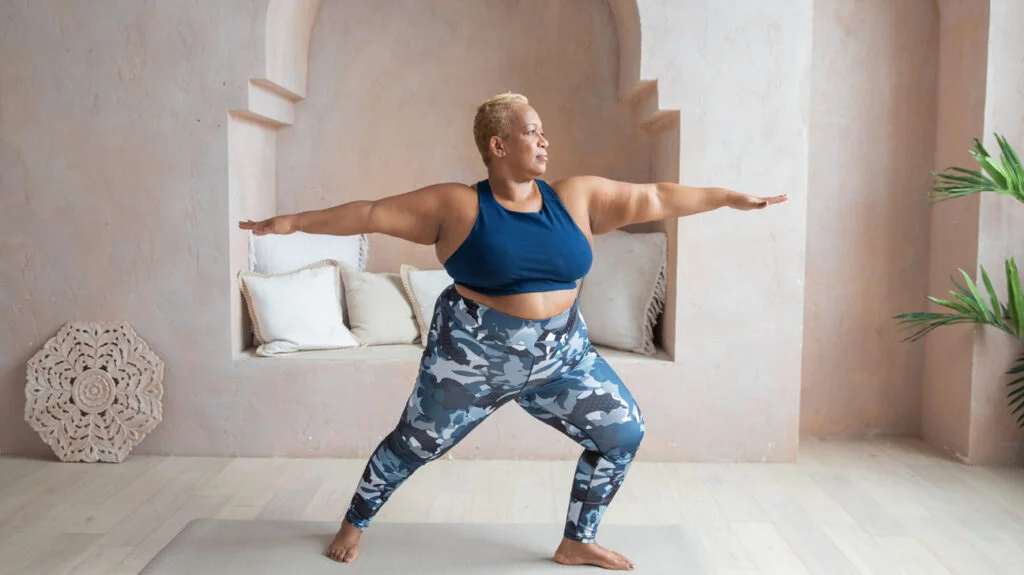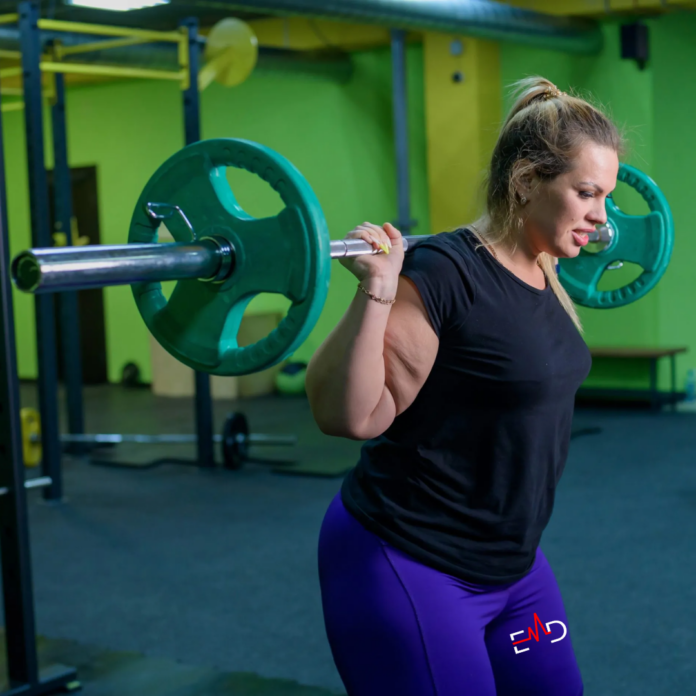Exercise Daily – Are you ready to embark on a journey to shed those extra pounds and achieve your weight loss goals? Creating a well-structured exercise routine is an essential step in your fitness journey. In this guide, we’ll walk you through crafting an effective workout plan tailored to your needs and goals.
Before you start any exercise routine, setting clear and achievable goals is crucial. Are you looking to lose a specific amount of weight, tone your body, or improve overall fitness? Knowing your objectives will help you tailor your routine accordingly.
Assess Your Current Fitness Level
Assessing your current fitness level is crucial in creating an effective weight-loss exercise routine. It provides a foundation for tailoring your workouts to your needs and abilities.
I. Why Assess Your Current Fitness Level?
Understanding where you currently stand in terms of fitness is essential for several reasons:
1. Personalization
Assessment allows you to personalize your exercise routine. A one-size-fits-all approach may not yield the best results.
2. Safety
Assessing your fitness level helps prevent injuries. It ensures you choose exercises appropriate for your physical condition.
3. Realistic Goal Setting
It aids in setting realistic and achievable fitness goals. Knowing your starting point helps you track progress effectively.
II. How to Assess Your Fitness Level
Here are some simple methods to evaluate your current fitness level:
1. Cardiovascular Endurance
Test your cardiovascular endurance by performing brisk walking, jogging, or cycling. Note how long you can sustain these activities without feeling fatigued.
2. Strength
Measure your strength by performing basic exercises like push-ups, squats, or planks. Count how many repetitions you can do with proper form.
3. Flexibility
Assess your flexibility by attempting stretches. Measure your range of motion and note any areas where you feel tightness or discomfort.
4. Body Composition
Consider measuring your body composition, including body fat percentage and muscle mass. Various tools and methods are available for this purpose.

Choose the Right Types of Exercises
Selecting the right types of exercises is a pivotal decision in crafting your effective exercise routine for weight loss.
I. Why Exercise Selection Matters
The exercises you choose will directly impact your weight loss journey. Here’s why making the right selections is essential:
1. Targeted Results
Different exercises target specific muscle groups and energy systems. The right choices can help you achieve your weight loss goals efficiently.
2. Motivation and Enjoyment
Opting for exercises you enjoy increases your motivation to work out regularly. This makes sticking to your routine easier.
3. Balanced Workout
A well-rounded routine that includes various exercises ensures you’re not neglecting any aspect of fitness, such as cardiovascular health, strength, and flexibility.
II. Types of Exercises to Consider
Let’s explore some types of exercises you can incorporate into your routine:
1. Cardiovascular Exercises (Aerobic)
Cardio workouts get your heart rate up and help burn calories. These include:
- Running: A classic choice for cardiovascular fitness.
- Cycling: Great for low-impact cardio.
- Swimming: A full-body workout that’s easy on the joints.
- Jump Rope: An effective calorie-burning exercise.
2. Strength Training (Anaerobic)
Strength exercises build muscle, increase metabolism, and improve overall body composition. Options include:
- Weightlifting: Using free weights or machines to target specific muscle groups.
- Bodyweight Exercises: Push-ups, squats, and planks can be done anywhere.
- Resistance Bands: A versatile and portable way to build strength.
3. Flexibility and Mobility Exercises
Improving flexibility reduces the risk of injury and enhances overall mobility. Consider:
- Yoga: Combines flexibility, balance, and relaxation.
- Stretching: Focusing on stretching major muscle groups.
- Pilates: Strengthens the core and improves flexibility.
III. Choosing the Right Mix
The ideal exercise routine for weight loss often combines various types of exercises. Here’s a simple formula to help you decide:
- Cardiovascular: Aim for at least 150 minutes of moderate-intensity cardio or 75 minutes of vigorous-intensity cardio per week, or a combination of both.
- Strength Training: Include strength exercises 2-3 times a week, targeting major muscle groups.
- Flexibility and Mobility: Dedicate 10-15 minutes to daily stretching and mobility exercises.

Create a Weekly Schedule
Crafting a well-structured weekly schedule is a pivotal part of your journey to create an exercise routine for weight loss.
I. The Importance of a Weekly Schedule
A well-planned weekly schedule offers several benefits:
1. Consistency
A set schedule helps you develop a consistent exercise habit, which is crucial for weight loss.
2. Variety
A structured routine allows you to incorporate various exercises, preventing boredom and plateaus.
3. Progress Tracking
You can track your progress and make adjustments as needed with a schedule.
II. Creating Your Weekly Exercise Schedule
Let’s break down the steps to create an effective weekly schedule:
1. Determine the Number of Workouts
Decide how many days a week you can commit to exercising. Aim for at least 3-5 days for noticeable results.
2. Balance Cardio and Strength
Allocate days for cardiovascular workouts (like running or cycling) and days for strength training. A balanced mix is key.
3. Include Rest Days
Don’t forget rest days. Your body needs time to recover. Typically, one or two rest days per week are recommended.
4. Warm-Up and Cool Down
Include time for warm-up and cool-down exercises in each session. These help prevent injuries.
5. Set Workout Duration
Determine how long each workout will be. Cardio sessions might range from 30 to 60 minutes, while strength workouts could be 45 minutes to an hour.
Set Realistic Timeframes
Setting realistic timeframes is fundamental to crafting an effective weight-loss exercise routine.
I. The Significance of Realistic Timeframes
Understanding that weight loss is a gradual process is crucial for long-term success. Here’s why setting realistic timeframes matters:
1. Sustainable Progress
Realistic timelines ensure you don’t rush your weight loss journey, making it more sustainable and less likely to result in burnout.
2. Healthy Habits
Taking your time allows you to establish healthy habits, contributing to lasting results.
3. Avoiding Frustration
Unrealistic expectations can lead to frustration and disappointment. Realistic timeframes help you stay motivated.
II. How to Set Realistic Timeframes
Let’s delve into practical steps for establishing realistic timeframes:
1. Assess Your Goals
Review your weight loss goals and determine how much you aim to lose.
2. Understand Healthy Weight Loss Rates
A safe and sustainable rate of weight loss is typically around 0.5 to 2 pounds (0.2 to 0.9 kilograms) per week. Keep this in mind when setting your timeframe.
3. Calculate Your Target
Use the healthy weight loss rate to estimate how long it might take to reach your target weight. For example, if you want to lose 20 pounds and aim for a rate of 1 pound per week, it may take around 20 weeks.
4. Consider Lifestyle Factors
Your lifestyle, exercise routine, diet, and stress levels, can impact your weight loss rate. Be realistic about how consistently you can stick to your plan.
5. Plan for Plateaus
Weight loss is not always linear. There may be periods where you don’t see progress. Factor in potential plateaus in your timeframe.
Warm-Up and Cool Down
Incorporating warm-up and cool-down routines into your exercise routine is essential for safety and performance.
I. The Importance of Warm-Up and Cool-Down
Warm-up and cool-down exercises serve critical purposes in your fitness regimen:
1. Injury Prevention
Warm-Up: A proper warm-up gradually increases your heart rate and circulation, preparing your muscles and joints for more intense activity. This reduces the risk of injury during exercise.
Cool-Down: Cooling down helps prevent post-workout muscle soreness and stiffness by gradually lowering your heart rate.
2. Improved Performance
Warm-Up: It primes your body for exercise, enhancing performance during your workout.
Cool-Down: Cooling down promotes recovery, reducing the chances of feeling fatigued after exercise.
3. Mental Preparation
Warm-Up: It mentally prepares you for the workout ahead, helping you focus and get in the right mindset.
Cool-Down: It allows you to mentally wind down and reflect on your workout, fostering a sense of accomplishment.
II. Effective Warm-Up Routine
A proper warm-up should last 5-10 minutes and include the following elements:
1. Cardiovascular Warm-Up
Start with light cardiovascular activity like jogging in place, jumping jacks, or brisk walking. Gradually increase the intensity to get your heart rate up.
2. Dynamic Stretches
Perform dynamic stretches that mimic the movements you’ll do during your workout. Examples include leg swings, arm circles, and hip rotations.
3. Mobility Exercises
Incorporate mobility exercises that target specific joints and muscle groups. This helps improve flexibility and range of motion.
III. Effective Cool-Down Routine
A cool-down should also last 5-10 minutes and consist of the following components:
1. Slow Down Gradually
Reduce the intensity of your workout gradually rather than abruptly stopping.
2. Static Stretches
Perform static stretches to help relax and lengthen your muscles. Focus on major muscle groups, holding each stretch for 15-30 seconds.
3. Deep Breathing
Practice deep, slow breathing to relax your body and reduce stress.
4. Hydration
Rehydrate your body by drinking water after your workout to replace lost fluids.

Monitor Your Progress
Monitoring your progress is crucial to any successful exercise routine for weight loss.
I. Why Monitor Your Progress?
Keeping an eye on your progress offers several benefits:
1. Motivation
Seeing tangible results can be highly motivating. It reminds you that your efforts are paying off.
2. Accountability
Progress tracking holds you accountable for your fitness goals, making it less likely to slip into unhealthy habits.
3. Adaptability
Monitoring allows you to adjust your exercise routine and diet if progress stalls.
II. How to Effectively Monitor Your Progress
Here’s how to keep track of your fitness journey:
1. Set Clear Goals
Establish specific and measurable goals at the beginning of your weight loss journey. For example, aim to lose a certain number of pounds or inches off your waist.
2. Use a Journal or Fitness App
Maintain a journal or use a fitness app to record your workouts, dietary choices, and changes in your body measurements or weight.
3. Take Regular Photos
Progress photos can be powerful visual evidence of your journey. Take pictures from different angles to compare over time.
4. Track Your Body Measurements
Measurements of key areas like your waist, hips, chest, and thighs provide insights into body composition changes.

Stay Hydrated and Eat Right
Staying hydrated and maintaining a healthy diet are fundamental pillars of a successful weight-loss exercise routine.
I. The Significance of Hydration and Nutrition
Both hydration and nutrition play pivotal roles in achieving your weight loss goals:
1. Hydration
Proper hydration is essential for overall health and optimal exercise performance. Water supports various bodily functions, including temperature regulation and nutrient transportation. Staying hydrated helps prevent muscle cramps, fatigue, and overheating during workouts.
2. Nutrition
Your diet influences your energy levels, metabolism, and body composition. Eating right provides the necessary fuel for your workouts and supports muscle recovery. A well-balanced diet ensures you have the energy and nutrients needed to maximize the effectiveness of your exercise routine.
II. Tips for Staying Hydrated
Here’s how to maintain proper hydration:
1. Drink Water Regularly
Make it a habit to sip water throughout the day, not just during workouts. Carry a reusable water bottle to make hydration convenient.
2. Monitor Urine Color
A pale yellow indicates adequate hydration, while darker yellow or amber may suggest dehydration.
3. Hydrate Before, During, and After Exercise
Before your workout, drink a glass of water. During exercise, sip water at regular intervals. Afterward, rehydrate to replace lost fluids.
Conclusion
Congratulations on taking the first step towards creating a tailored weight-loss exercise routine. Remember, the journey may have ups and downs, but with determination and the right plan, you can achieve your fitness goals. Now, let’s address some common questions to help you on your path to success.
FAQs – How to Create an Exercise Routine for Weight Loss
Q: How often should I work out to lose weight?
The frequency of your workouts depends on your schedule and fitness level. Aim for at least 3-5 days of exercise per week.
Q: Can I solely rely on exercise for weight loss?
While exercise is crucial, a balanced diet plays a significant role in weight loss. Combine both for the best results.
Q: Is it okay to do the same workout every day?
Variety is beneficial for preventing plateaus and overuse injuries. Consider changing your routine regularly.
Q: What should I eat before and after workouts?
Before workouts, opt for a light meal or snack with carbohydrates and protein. Afterward, prioritize protein for muscle recovery.
Q: How long does a new exercise routine take to see results?
Results vary from person to person. Generally, you may start noticing changes in 4-8 weeks with consistent effort.





